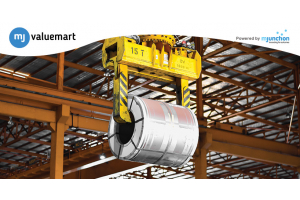Common MRO pain points and how to address them

Industry 4.0 is making its way to different industries and companies are looking for ways to improve their operations and stay competitive. Some are even embracing digital technologies to monitor physical inventory movements. However, as businesses are spending a huge amount of time and money managing MRO spares, it is important to understand common pain points so that they can be addressed properly.
Here we look at common pain points in MRO and they can be addressed:
Different departments, different goals: When it comes to MRO spare, different departments may have different goals. These different goals may not be aligned with the overall effectiveness of the supply chain. This happens because of the lack of cross-department insights and communication. For instance, the purchase team is buying a particular spare part at a low cost. But the low-cost part needs to be replaced quite frequently and this impacts the work of the maintenance department. This increases the budget of the maintenance department. To address this issue, each department needs to understand the end-to-end MRO process and all stakeholders from time to time must discuss not the cost impact but also the quality and reliability of the spare parts bought.
Segmented workflows: Many companies have different workflows and different systems. However, too many workflows and systems make the process more complicated. For instance, different workflows across a system involve a lot of manual work. This creates opportunities for mistakes. The maintenance team often bears the brunt of change in systems as they need the right parts at the right time. Often when there are different workflows, some employees bypass procedures to save time and effort. However, this further leads to more problems. Streamlining the system and aggregating them into one system is the best way to address this problem.
Reactive approach: If there’s something that really wastes the time of the maintenance department it is the mismanaged warehouse. Technicians lose their productive hours looking for parts, driving to different suppliers to purchase parts, and returning to sites to finish jobs. This increases the work order completion time significantly. Taking a reactive approach mode means rushing to complete the orders. Better MRO practices start with an assessment of critical equipment and critical parts. Armed with this knowledge, you will be able to better plan MRO purchases.
Poor MRO requirement prediction: As the industry landscape is changing so rapidly, many companies are struggling to predict future supply and demand. This mainly leads to overstocking which eventually leads to dead stock. Timely and near real-time data can help businesses with that will make the purchase of MRO spares more streamlined. Many companies are using procurement data analytics to guide their supply chain strategy. Data-driven insights can help drive efficiencies in supplier consolidation, cost reduction, and productivity improvements.
Looking for unused, genuine MRO spare parts online?
A very important part of inventory management is to buy the MRO spares at the lowest prices possible. You can buy large volumes of unused, genuine MRO spares. You will find ball bearings, thrust bearing, roller bearing and other MRO spares on the multi-vendor platform. The use of thrust bearings is done to carry loads in the axial direction. Buyers can log in to check unused products available at competitive prices, place the products online and get them delivered to their doorstep. To become a registered buyer, submit your request.





